
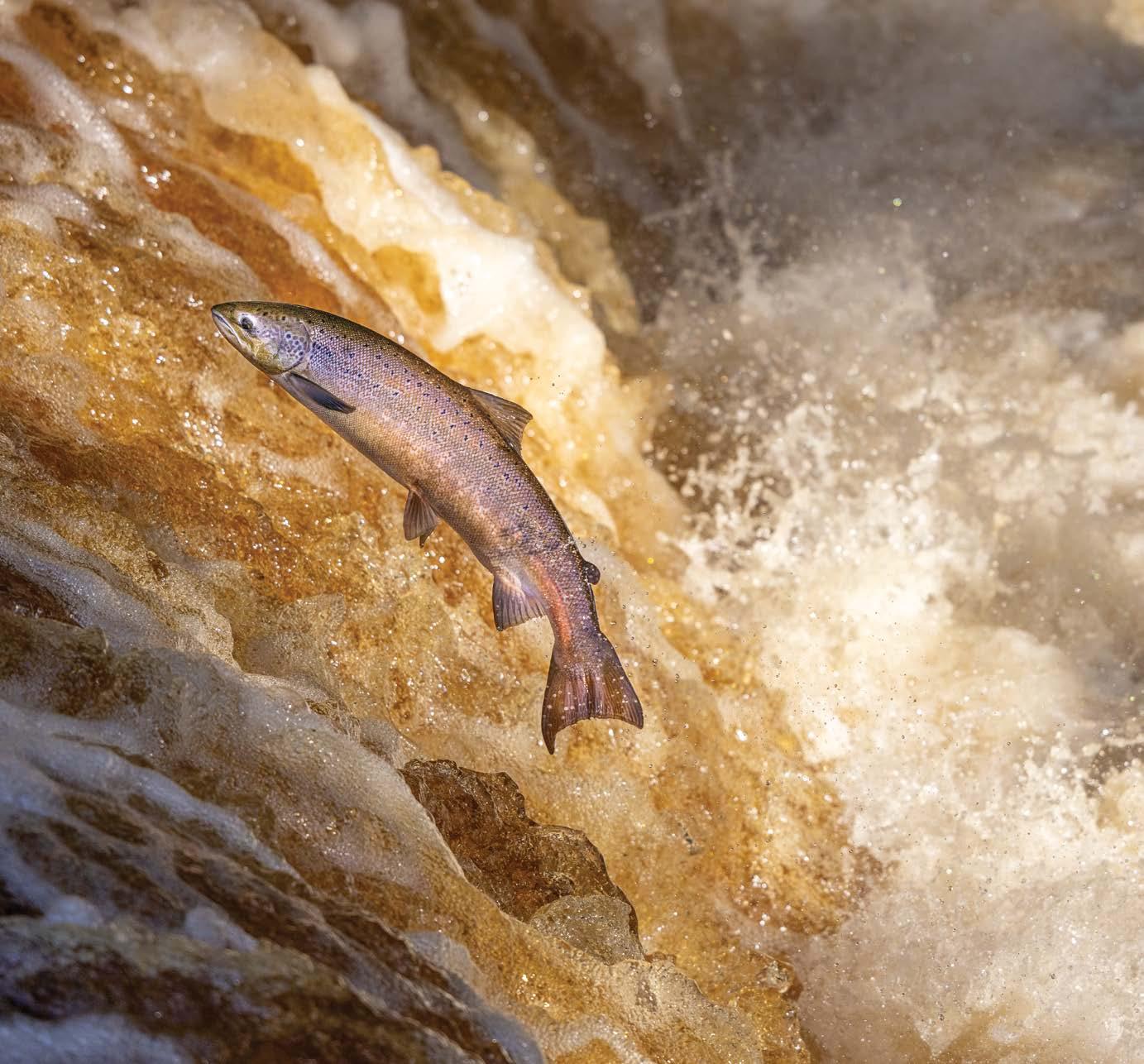







A blueprint for nature’s recovery
This Bringing Yorkshire’s Nature Back work was made possible thanks to the support of the Joyce Mary Mountain Will Trust.
Cover images:
Eurasian Beaver (Castor fiber) –
A keystone species and its absence has had a profound impact on the ecology of our rivers. This species’ reintroduction is an important step toward meeting the government’s species abundance and extinction targets.
Golden Eagle (Aquila chrysaetos)
– After years of absence, this species will hopefully make a return to Yorkshire (either through direct assistance or colonisation by reintroduced individuals from Scotland).
Atlantic Salmon (Salmo salar)
– Requires both healthy and interconnected marine and freshwater systems. After an absence of over 200 years, Atlantic Salmon is starting to breed again in Yorkshire’s rivers where it was once locally extinct, but there is still much work to be done.
Yorkshire Sandwort (Arenaria norvegica subsp. anglica)
– endemic to limestone habitats on Ingleborough’s lower slopes. It is just one of an assemblage of montane plant species that Ingleborough National Nature Reserve supports.
This Bringing Yorkshire’s Nature Back work was made possible the support of the Joyce Mary Mountain Will Trust.

President, Yorkshire Wildlife Trust

It is one (good) thing for the UK Government to agree to protect 30% of land and sea for nature by 2030, and quite another to actually deliver it. As far as I am aware no part of the UK (nation, county or city-region for example) has said how they could achieve this critically important goal. And time is short – just five years to do something nobody has done before. Yorkshire Wildlife Trust lays out in this document how it can be done in Yorkshire.
First and foremost, there is no way Yorkshire Wildlife Trust can achieve this alone, or in partnership with the other voluntary and statutory conservation agencies that operate in the county. Collaboration must extend much more widely, across all sectors of society involved in one way or another with managing our landscapes and seascapes. And if those partnerships are successful, Yorkshire can do it! We can protect 30% of the land, freshwater and seas that make up God’s Own County. It will still be a huge challenge but knowing that it is possible, and the huge benefits it will bring for both our people and wildlife, fills me with hope. In typical Yorkshire fashion, let’s crack on with it.
Rachael Bice Chief Executive, Yorkshire Wildlife Trust

We have big ambitions for nature’s recovery in Yorkshire: to be the first region in England to achieve the crucial ‘30 by 30’ target. With this ‘Blueprint’ we are setting out the evidence-based opportunities which will help us all to thrive. All species depend on clean water and air, a food source, a home base, mobility, ecological and social connectivity. Humans also have the necessity of supporting a complex economic system, and it is possible for our natural systems to offer us a surplus to trade on and grow from when carefully stewarded. The interests of different species do not have to be in opposition; understanding our common and specific needs will allow carefully-designed
“Here we present what Yorkshire’s nature needs to survive and recover over the next five years, building on the insights from the State of Yorkshire’s Nature report published in 2024.“
natural, social and economic systems to become possible and sustainable.
Yorkshire Wildlife Trust has always spoken up boldly for wildlife and stewarded precious wild places wherever and whenever we can. We do this pragmatically and through experience, showing how wild-life and human-life can coexist and thrive together.
“Collaboration must extend much more widely, across all sectors of society involved in one way or another with managing our landscapes and seascapes.“
Here we present what Yorkshire’s nature needs to survive and recover over the next five years, building on the insights from the State of Yorkshire’s Nature report published in 2024.
This follows months of rigorous work, discussion and checks. By looking in detail at how to meet the international requirements of the 30 by 30 target, we have identified a series of deliverable, measurable, achievable interventions which everyone can contribute to. We now invite all stewards of Yorkshire to come together in a committed coalition for action and deliver the achievable 30 by 30 target. By carefully stewarding 30% of Yorkshire for nature, we will secure our collective future.
Globally, nature and the lifesustaining support we depend on are deteriorating faster than at any time in human history. As ecosystems degrade and species disappear, the benefits we get from them – such as clean air, water, and food –are also diminished. These losses degrade public health, economic stability, and social wellbeing.
State of Yorkshire’s Nature
In the UK, one in six species are now threatened with extinction.
To understand how nature is faring in Yorkshire, Yorkshire Wildlife Trust published an evidence-based assessment in June 2024 using the best available information on Yorkshire’s flora, fauna and ecosystems.
The report shows that Yorkshire’s wildlife is seriously threatened, but it also crucially points to solutions to halt and reverse the loss of our biodiversity. We have now used those findings to develop a Blueprint for bringing Yorkshire’s nature back.
The twin planetary crisis –climate change and biodiversity loss
Climate change, loss of biodiversity and degradation of ecosystems are leading to an increasing frequency of extreme and erratic weather events. These effects can be seen across Yorkshire, from flooding of homes and businesses, to impacts on food production and security, and deterioration of infrastructure from potholes to flood banks.
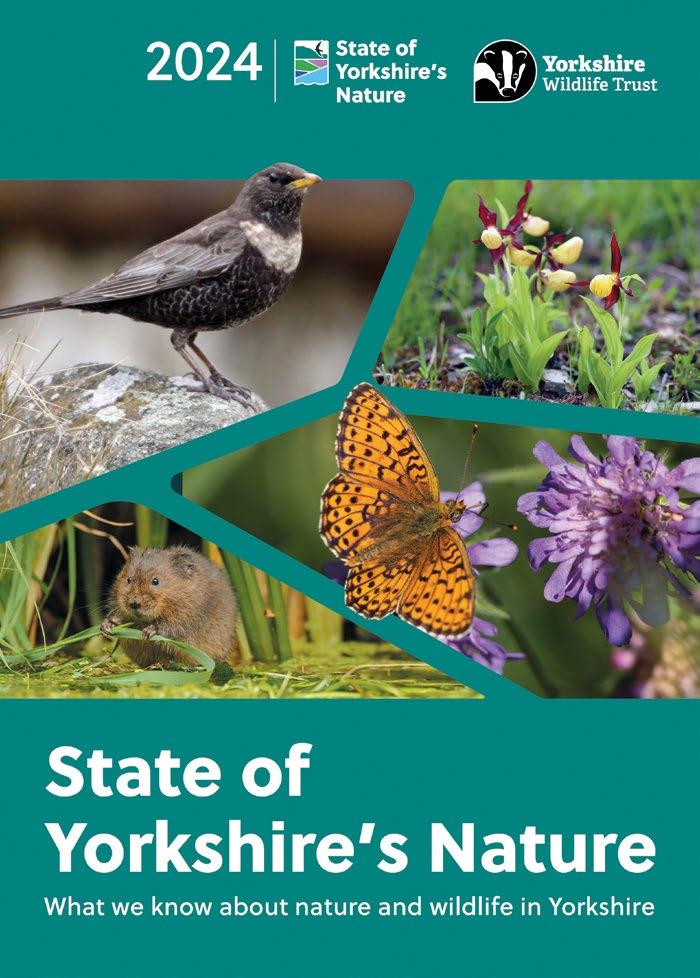
! Around 3,000 species are at risk of extinction in Yorkshire
! Only 1 in 10 terrestrial wildlife sites have legal protection
! More than 80% of our wetlands have been lost due to water drainage and river canalisation
! Nearly half of the rivers in Yorkshire have also been physically modified, and many are in poor ecological condition


Extreme rainfall events are being exacerbated by climate change
In Yorkshire, nearly 247,000 homes are at risk of flooding. For every person whose home is flooded, over 16 more will be affected by the adverse impacts on transport infrastructure, utilities, schools and businesses.

A thriving natural environment and stable climate are the foundation of a prosperous Yorkshire. Economy, food security, resilient homes and infrastructure, and healthy communities all benefit.
The science shows that if 30% of our land, waters and seas were positively managed for nature, that would help halt and even reverse biodiversity decline.
The 30 by 30 target – an international commitment
Almost 200 nations have agreed to the international targets established in the Kunming-Montreal Global Biodiversity Framework, which includes the call for the conservation and management of at least 30% of land, waters and seas by 2030 (the 30 by 30 target). The UK Government has also committed to this legally-binding target which forms the foundation of its nature recovery ambitions.
82% of the general public is strongly in favour of the 30 by 30 target, recent research finds* *
Yorkshire can play a large part – and when we join up across the county, our efforts here can be nationally significant.

The largest county – covering 12% of England’s land area
Important for biodiversity –hosting 2/3 of all British non-microbial species – over 40,000 species
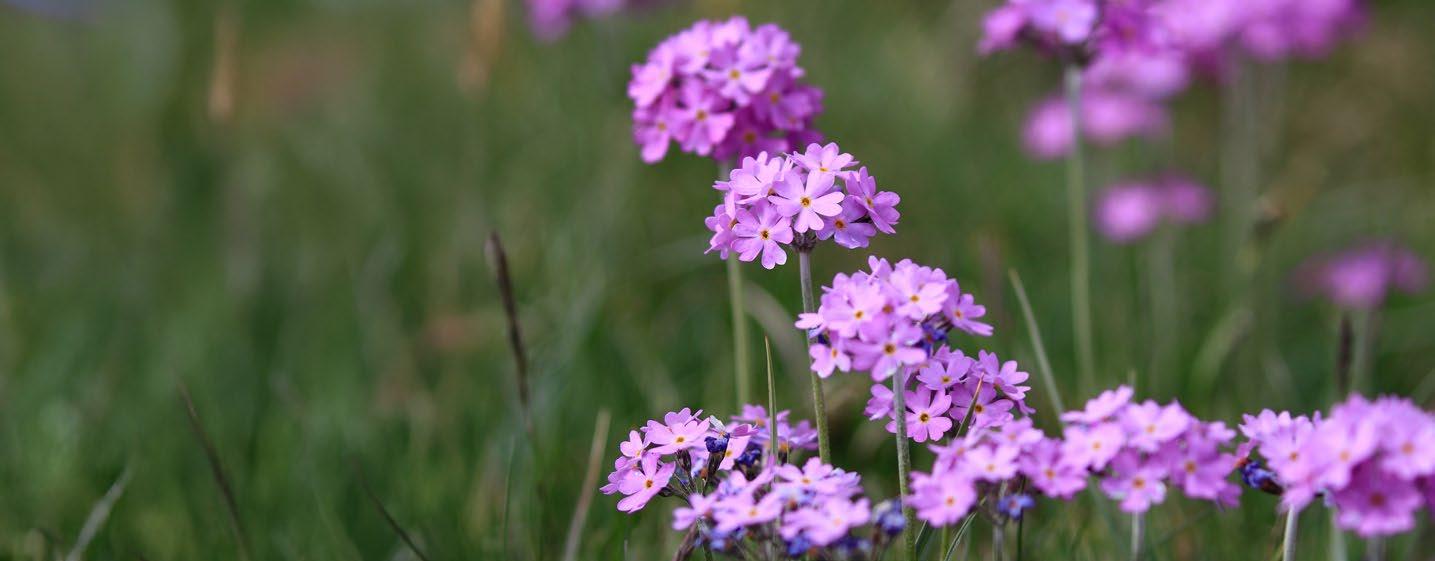
A diverse landscape – supporting national priority habitats, including irreplaceable habitats and six stronghold habitats


Important custodians – a stronghold for around 3,000 species
Achieving 30% of land positively managed for nature will require a collaborative, crosssector approach delivered through local action and influence.
This Blueprint identifies seven opportunities for delivering 30 by 30 for Yorkshire – doing our part nationally while and ensuring a positive future locally.
A thriving natural environment and stable climate are the foundation of a prosperous Yorkshire. Our economy, food security, resilient homes and infrastructure, and healthy communities will all benefit.
Achieving 30% of positively managed land and sea is crucial for a thriving Yorkshire and importantly, it is possible.
The challenge is great, but so too is the reward – nature’s recovery leading to a healthy, thriving and resilient Yorkshire for nature and people.
Our ambition must be bold and our efforts collective – only together will we be successful.
First, we must ensure a strong foundation – we need a robust core of protected areas from which to build a resilient nature network.
Opportunity 1: Improve our protected areas
Our important places for nature, such as Sites of Special Scientific Interest and Marine Protected Areas, must be well-managed and at the heart of nature recovery.
Opportunity 2: Protect more places for nature
Long-term protection of more sites on land and at sea is essential to secure the future of key species and habitats.
Opportunity 3:
Revitalise our Protected Landscapes
Our wonderful Yorkshire National Parks and National Landscapes should be restored and managed for nature alongside their other purposes.
Opportunity 4: Create new nature-rich landscapes
We need a nature recovery network to create new spaces for nature at scale and where natural processes can re-establish.
The Protected area network and Protected Landscapes cannot deliver nature’s recovery in Yorkshire alone. It will be our activities outside these areas, particularly in the agricultural and urban spaces, that will enable us to fully achieve our goal.
Opportunity 5: Reconnect wild places
Corridors and stepping stones can provide habitats, and connect and integrate nature into stronger ecosystems.
If we get the habitats right, many species will benefit – thereby helping to halt and reverse the decline of nature. Some species will require specific interventions, while the return of others will bring transformational changes helping nature to recover.
Opportunity 6: Restore threatened species
Reversing the decline of threatened species and bringing back those that have been lost will restore the natural diversity, ecological processes and important functions of ecosystems.
Yorkshire’s 30 by 30 ambition can only be delivered through the power of people.
Opportunity 7: Mobilise nature positive communities
We must join up the ‘nature network’ and the ‘people network’ that will defend, deliver and benefit from naturefocused management and regeneration of the areas where we live and work. This will ensure delivery of the nature recovery opportunities.
While 30 by 30 provides a target, the condition of the remaining 70% – including cities and villages, agriculture, fisheries – is equally important.
Together we can deliver 30 by 30 in Yorkshire
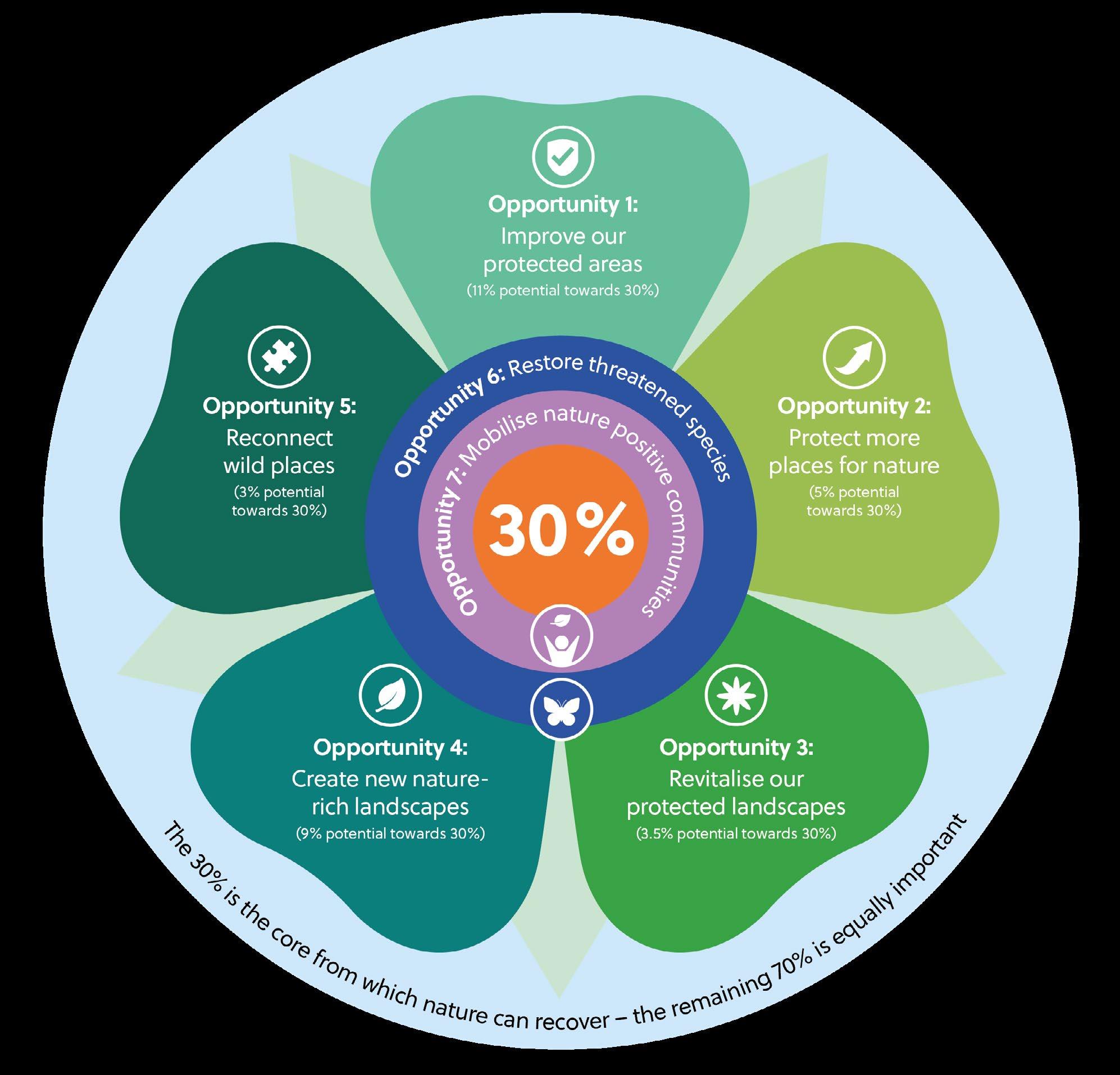

Our wildlife is threatened Yorkshire is rich in both terrestrial and marine natural areas, but biodiversity loss is real and ongoing. Urgent action is required to halt and reverse biodiversity declines.
Evidence points to solutions
The science is clear – very large-scale conservation is required to deal with biodiversity loss, and 30% of positively managed land is the minimum required to maintain global biodiversity.
Acknowledging the importance of this target, almost 200 nations including the UK have committed to conserve and manage 30% of land, waters and seas by 2030 (referred to as the 30 by 30 target).
A foundation for nature’s recovery
The Government is using the global 30 by 30 target as the foundation for achieving nature’s recovery nationally. Achieving this ambition will require a collaborative, cross-sector approach delivered through local action and influence, in which Yorkshire can play a large role.
Positively managing 30% of Yorkshire’s land and sea for nature would not only restore habitats and wildlife populations, but would also provide critical benefits for people, including climate resilience, cleaner air and water, healthier soils, and increased opportunities for recreation.

More than a term
But what does 30 by 30 actually mean – is it achievable, and what would it look like for Yorkshire?
To answer these questions, we have used existing policies, targets and principles to develop a Blueprint setting out seven opportunities to deliver nature’s recovery in Yorkshire.
Since the publication of the government report Making Space for Nature in 2010 (now widely known as the ‘Lawton Report’), making a network of More,
A fragmented landscape
Bigger, Better and Joined sites has become a guiding principle of nature recovery policy and practice in England and elsewhere in the world.
Species continue to decline
Nearly 1 in 5 species have declined by more than 25% in the last 20 – 30 years
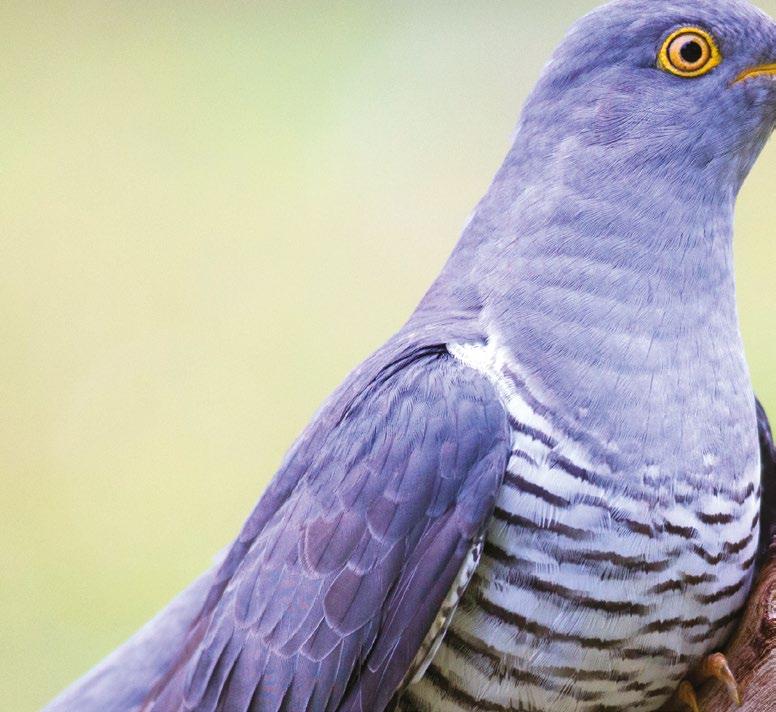
We have drawn upon the Government’s developing criteria for land that can count towards the national 30 by 30 target, other national targets such as the Environment Act and Environmental Improvement Plan, and national policies such as the developing Land Use Framework. This has been further informed by our State of Yorkshire’s Nature findings and framed in the context of the widely accepted Lawton principles of ‘more, bigger, better and joined’. The evidence base for this analysis is available at www.ywt.org.uk/ bringing-yorkshires-nature-backtechnical-appendix.
We can achieve the target of at least 30% of positively managed land for Yorkshire.
This Blueprint aims to be complementary to the four Local Nature Recovery Strategies being developed for Yorkshire – each of which will contribute to a countywide nature network delivered through collaboration and the strong partnerships forming around their development.

A healthy and resilient landscape
More – increase the overall extent of land and water dedicated to nature conservation. E.g. Create arable margins and more urban green spaces benefiting both nature and people, as well as new protected areas
Joined – create connections on and between land, water and sea, allowing for wildlife movement and genetic exchange through corridors and stepping stones. E.g. Create and restore hedgerows and manage road verges to increase biodiversity
The Government is currently developing criteria to define which land can formally contribute toward the national 30 by 30 targets. Progress towards environmental targets continues to be slow; meanwhile, the scientific evidence reminds us of the urgency in which we need to act.
Yorkshire Wildlife Trust advocates for strong criteria to ensure a nature network which will support the needs of wildlife and people. We also recognise the need to be pragmatic and proactive.
Our 30 by 30 calculations acknowledge that future Government criteria may mean that some land and activities will not formally contribute toward the national 30 by 30, even though they are helping nature recover. But this must not delay action or reduce our ambition. To restore a nature network for Yorkshire we need to act now – building on activities already underway, supporting and celebrating all contributions and providing the best stewardship of the environment possible.
Better – improve the quality of existing habitats through better management and restoration.
E.g. Improved management of woodlands and re-naturalising rivers, improving water quality, removing artificial barriers
Success will require the collective and collaborative actions of people, communities and organisations across Yorkshire.
We put forward these proposals as an ambition for Yorkshire as a whole. We want to see a coalition of partners making our shared vision a reality. These proposals are therefore addressed to non-governmental organisations (NGOs), national and local government bodies, the corporate sector, farmers, land owners and managers and Yorkshire’s communities more widely.
Bigger – create larger, more contiguous areas of habitat, to reduce fragmentation.

E.g. Increase the extent of woodlands and create buffer zones around sensitive sites
The best chance for restoring nature and its resilience will come from working co-operatively and working at scale.
Protected areas are at the heart of the nature network, forming its core component. They provide strict statutory protection, such as Sites of Special Scientific Interest (SSSI), for valuable habitats and the species they support.
Making a significant contribution to Yorkshire’s 30% – Yorkshire’s protected area network is dominated by Sites of Special Scientific Interest designations, which cover almost 11% of Yorkshire’s land cover.
Protection plus sustainable management is required – the quality of our important sites is also important to the health and resilience of the network.
Only 11% of our SSSIs are in ‘favourable’ condition – that means just 1% of Yorkshire’s land area contributing to Yorkshire’s 30%. Without action, this will reduce the integrity of the network. This is a challenge because often the cause of the damage lies outside the SSSI boundary and outside simple management.
Long-term restorative management of our ‘unfavourable’ sites is required to ensure their health and ability to effectively contribute to Yorkshire’s 30 by 30.
Land managers and farmers supported by government and others will play a vital role by bringing existing protected areas into recovery and driving the recovery of additional areas that will need to be protected and managed for nature.
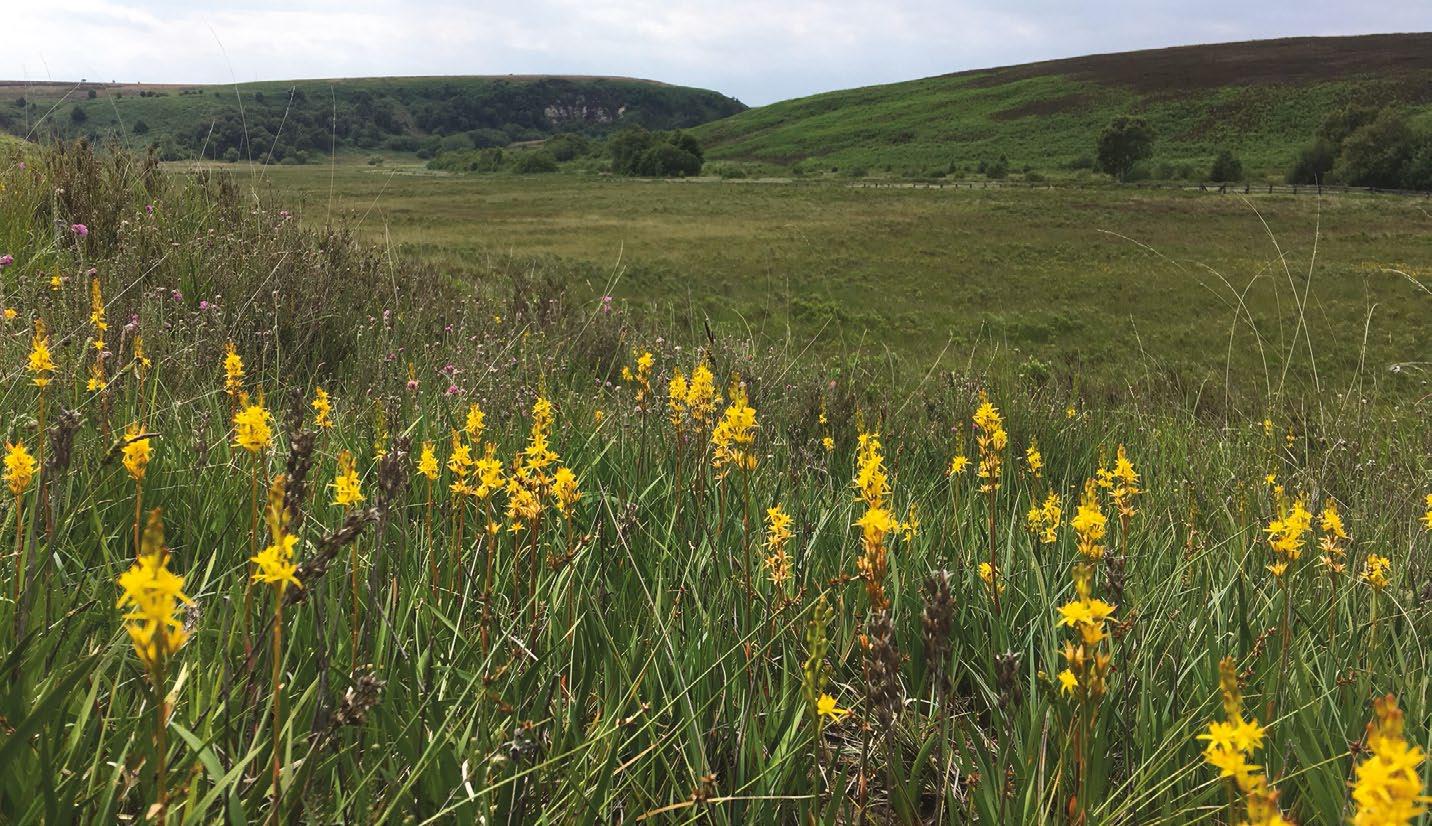
More than 270 SSSIs in Yorkshire – supporting special features such as threatened habitats, characteristic, rare and endangered species




Improving the condition of our SSSIs is important and urgent. Healthy ecosystems with greater biodiversity can ensure that our landscapes can adapt and recover from the threats – drought, flooding, and fire – that are becoming an increasing challenge.
Navigating the challenges of SSSI management SSSI condition can be impacted by various factors, and how easily these can be resolved can vary.
Inadequate or inappropriate land management practices – some sites depend on active interventions like grazing or scrub clearance, which may be absent or misapplied. Further improving the condition of some of these sites can take time.
SSSIs are vulnerable to external pressures – activities outside the SSSI boundary and so outside the control of its managers, such as development, nutrient run-off, pesticide drift, and hydrological changes from agriculture, can severely damage a site.
Long-term decline can go unchecked, hampering progress and amplifying the issue due to irregular monitoring and insufficient enforcement of management.
National targets are unambitious – resulting in slow progress and the risk of risking falling short (e.g. the Government target to restore 75% of SSSIs to ‘favourable’ condition by 2042, would require 17 years to achieve an 8% contribution to the 30 by 30 target).
To manage SSSIs more effectively, a multi-faceted approach is needed focusing on proactive management, funding, collaboration, and timely monitoring and enforcement.
Brimham Common is a National Trust Property and a Site of Special Scientific Interest (SSSI), meaning it’s one of the most valuable sites for nature in the country. In recent years, its condition has been assessed as ‘unfavourable, but recovering’. With the help of a farmer from the National Trust’s Upper Wharfedale Estate, 34 Belted Galloway cattle were introduced in 2024. These gentle but hardy cattle graze the moorland each summer so that within the next 10 years, this SSSI can be reclassified as in ‘favourable condition’. The young cattle now play a vital role in keeping the moorland healthy. They nibble young birch saplings and trample
Delivering solutions outside the SSSI boundary
Askham Bog is a small valley mire that has remarkably survived inside the York ring road. It is a SSSI, a Yorkshire Wildlife Trust reserve, and one of the most important wetland sites in Yorkshire, but it is in ‘unfavourable’ condition. It has a rich flora and insect fauna and an exceptionally good and historically deep set of biological records. As a result, we know that nearly 400 plant species have been recorded on the site over the last 200 years but about 100 of those have been lost – primarily species of
bracken, creating space for groundnesting birds such as Curlew, Nightjar and Grasshopper Warbler to rear their chicks. Green Hairstreak butterfly, a species reliant on moorland plants, can be seen here alongside ten species of dragonfly. Without the cattle, fastgrowing Silver Birch trees would quickly dry out the moor, threatening this rare habitat and all its dependent species.
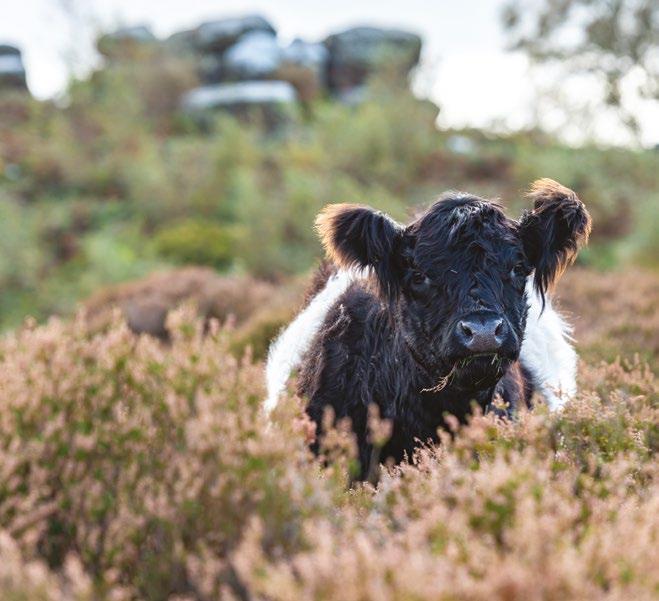
wet peat. The cause of the losses is a lowering of the water table caused by drainage and land use change around the bog. Recent management has stabilised the condition of the bog and some lost species are returning. But restoring the site to ‘good’ condition would require raising the water table and that needs agreement and support from surrounding landowners.
There is a solution, but getting there will take a strategic and collaborative approach to management beyond the SSSI boundary.

If we bring our SSSIs into ‘good’ condition, we are starting from a strong foundation of 11%.
Harness the potential of nonstatutory sites – with adequate protection, sites such as Local Wildlife Sites, ancient woodland sites, and land owned or managed by NonGovernmental Organisations (NGOs) provide an opportunity to increase the area of land contributing toward Yorkshire’s 30%. This will enhance the foundation from which to build more, bigger, better and joined.
Many Local Wildlife Sites are of SSSI standard highlighting their importance for biodiversity and their potential for increased protection.
Reaching the midpoint – nonstatutory protected sites cover around 4% of Yorkshire’s land area. However, not all of these sites will formally contribute to 30 by 30 due to their various levels of protection and management, emphasising the need for more.
Further strengthen the network – designate new SSSIs to bring even more of our most important sites under the strictest level of protection.
Our nature network needs strengthening – only 1 in 10 terrestrial wildlife sites have legal protection
Providing safe havens for species on the move
As well as protecting our surviving wildlife, Yorkshire may become home to species whose range is shifting in response to climate change.
Several butterfly species, previously rare or unknown in the county, have spread north in recent years and are now common in Yorkshire. Speckled Wood and Gatekeeper are good examples –others will follow as our climate changes.

Many of these sites are small and scattered. 69% of sites with the best protection (SSSIs) are smaller than 50 ha with a median size of ~17 ha, while the less-protected sites are even smaller with the median size <10 ha.
A living river corridor for nature recovery Along the mid-reach of the River Hull in the East Riding of Yorkshire, a connected network of statutory and non-statutory sites is helping to deliver the Lawton principles – creating more, bigger, better and joined habitats at landscape scale. From the Hull Bridge road crossing upstream to Yorkshire Wildlife Trust’s Skerne Wetlands nature reserve, a range of sites including SSSIs, Local Wildlife Sites and commercial farmland, form a range of habitats. These include wetlands, grasslands, agricultural ditches and a community woodland, with the flowing waters of the river creating the spine of this resilient ecological corridor.
NGOs, and businesses collaborate to manage and enhance habitats for species including Otter, Marsh Harrier, Great Crested Newt and Water Vole, along with other waterfowl and waders, and a range of farmland birds such as Tree Sparrow, Yellowhammer and Barn Owl.
At Dumble Farm, conservation grazing with Highland cattle provides a mosaic of wetland and farmed land, whilst Molescroft Farm’s community woodland at Storkhill has a network of paths and ponds created to enhance the tree planting. Further sites include the SSSI reservoirs, regionally important for waterfowl, and habitat-rich wetlands at Yorkshire Water’s Tophill Low and Watton Carrs nature reserve.





Key statutory sites including Pulfin nature reserve, Leven Canal, and the West Beck chalk stream at Skerne, provide the core biodiversity value. Surrounding non-designated sites act as vital stepping stones, buffer zones, and wildlife corridors. Landowners,
Combined, all these sites complement each other and demonstrate a joined up, multipartner approach to nature recovery along the river corridor.


Because of their size and diversity, Protected Landscapes (National Parks and National Landscapes) can deliver a significant contribution towards 30 by 30, enhancing the resilience of the nature network and enabling nature conservation at scale.
Positioned to be a major contributor – Protected Landscapes cover around 28% of Yorkshire’s land and freshwater area.
Significant opportunities for nature restoration alongside delivering other societal benefits – Protected Landscapes are concentrated in Yorkshire’s north and west. This coincides with areas of lower grade agriculture (Grades 4 and 5), some of which is already recognised as being of high value for nature, and vast areas of peatland.
Multifunctional landscapes – these are working landscapes that serve a number of different purposes, and so their specific contributions to nature recovery will vary.
Consolidating the protected area network – Around 30% of the Protected Landscape already receive protection under SSSI designation – highlighting the importance for improved management of SSSIs to ensure quality habitats within the Protected Landscapes. Taking land outside of SSSI and non-statutory designations (covered under Opportunity 1 and 2) into account, Protected Landscapes have the potential to contribute at least an additional 1.7% to Yorkshire’s 30%.
Future opportunities – Much of the Yorkshire Wolds is currently being considered as a new National Landscape
(formerly referred to as Areas of Outstanding Natural Beauty). The area could contribute 1-2% (dependent on the final boundary and excluding existing protected areas, i.e. SSSIs). This designation would not just take us closer to Yorkshire’s 30% target; its chalk habitats are strongly associated with species of conservation concern, with real potential to amplify the benefits to Yorkshire’s biodiversity.
Catchment restoration – maximising the contributions of landowners and farmers
The Ryevitalise Landscape Partnership Scheme delivered by North York Moors National Park and partners, aimed to reconnect people to the river, the history and wildlife of the area – revitalising the Rye catchment’s natural and cultural heritage.
Working with partners, landowners and farmers across around 160 square miles, the scheme created 21 hectares of stream buffer and 73 hectares of species rich grassland, planted 11 hectares of native woodland, restored over 100 hectares of plantations on ancient woodland sites.
National Landscape
Nidderdale National Landscape (NNL) is a special place for nature, home to a wide range of habitats and species.
The NNL Nature Recovery Plan sets out actions for working together to enhance biodiversity across the landscape –guided by habitat plans with targets and milestones for 2030 and beyond. Making good progress toward its freshwater habitat targets, recent wetland creation efforts have led to the development of a rich variety of freshwater habitats to support diverse wildlife including 52 new ponds, the restoration of 7 existing ones, and the creation of 15 scrape areas. These thriving wetlands are helping to
boost biodiversity, strengthen habitat connectivity and enhance resilience to climate change. Through close collaboration with landowners across 17 sites, the initiative has successfully transformed almost 5 hectares of land into wetland habitat, embedded within a wider landscape of 134 hectares.
Creating wet features in strategic areas across the landscape creates a more joined up approach providing the optimum opportunity for species recovery. Increasing connectivity ensures greater resilience to climate change.
“Working in partnership with the National Park Authority has enabled us to enhance wildlife habitats and improve water quality and natural flood management in the tributaries of the Rye where we farm.”
Trudy and David Sanderson (upland livestock farmers)





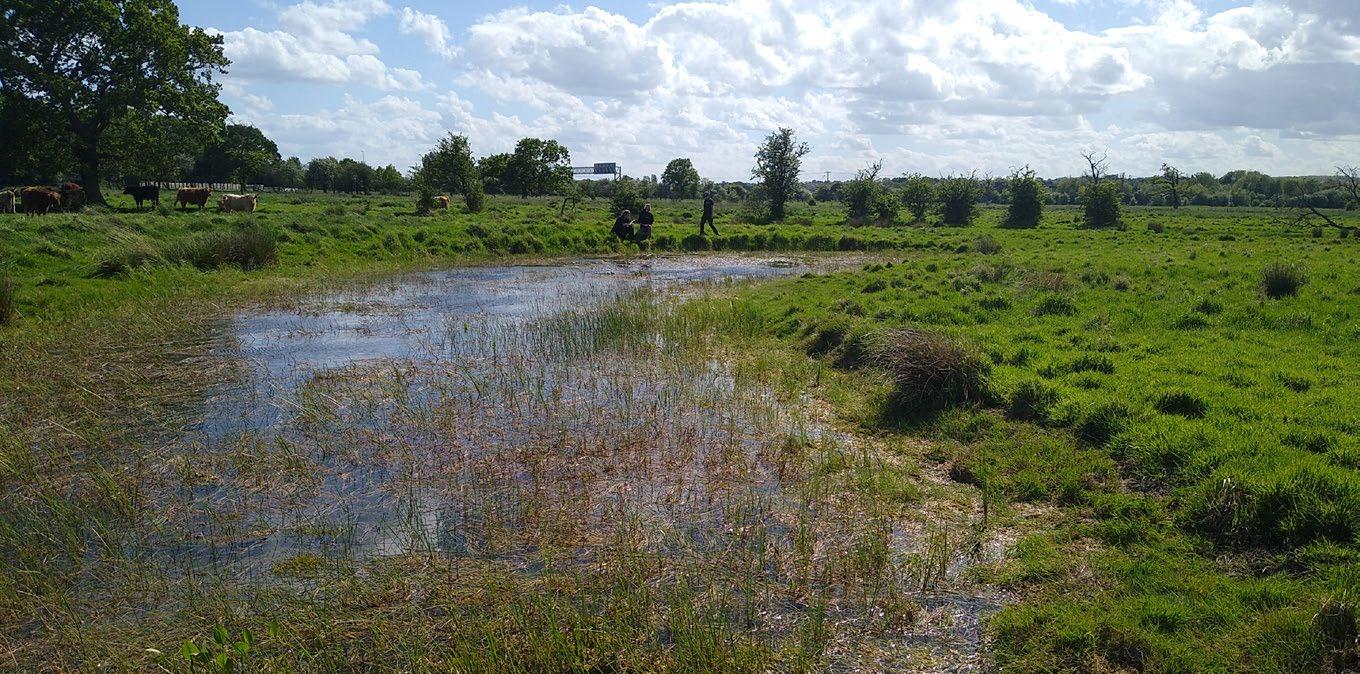
The importance of making habitats wetter for biodiversity, and helping the land to store carbon, mitigate climate change, reduce flood risk and secure water supplies, was highlighted in the State of Yorkshire’s Nature report.
The Government’s 30 by 30 criteria – what can count?


To realise the 30 by 30 target, land must be secured and afforded long-term protection, and be effectively managed and monitored to ensure that nature is in good condition.
Farmers, land managers and owners have a vital role to play by both bringing existing protected areas into recovery
Of the areas identified as having significant opportunities for wetland creation and restoration in Yorkshire, 40% are located in lower grade agricultural areas. This demonstrates the opportunity to bring biodiversity benefits without significantly impacting food production.
and driving the recovery of additional areas outside of the statutory protected area network.
Land managers must be supported by government – through sustainable financing mechanisms and with appropriate guidance and advice to support long-term conservation efforts, without which it will be difficult to achieve the formal 30 by 30 criteria.
Without protected areas the state of the natural environment would have been much worse, but they have not stopped nature’s decline. Existing protected areas are often compromised by small size, fragmentation and isolation, reducing the quality and functioning of natural systems.
A complementary approach to traditional protected areas – areas managed for biodiversity conservation, but not formally designated as protected areas, cover at least an additional 8% of Yorkshire and could provide opportunities for habitat creation and/or restoration over large areas. This includes privately conserved areas managed with a specific conservation objective (e.g. rewilded estates), and land primarily managed for other objectives, such as carbon or water-focused objectives (e.g. water companies, peat restoration programmes).
Enhancing the network’s integrity and resilience – because they are large, nature-led landscapes are more likely to be self-sustaining, supporting functional natural processes and improving habitat resilience. This will be particularly important in the face of climate change.
Connecting across Yorkshire – new nature-led landscapes provide very significant opportunities to connect people, groups, projects and programmes across Yorkshire to deliver nature’s recovery.
Landscape Recovery Schemes – an important contribution to nature’s recovery.
Landscape Recovery Schemes (LRS) are large-scale, ambitious habitat and species restoration projects co-designed by collaborative groups ranging from wildlife NGOs, private sector landowners and public bodies. LRS combine public, private and third sector funding to deliver nature’s
recovery at scale, and over a much longer timescale than existing agri-environment schemes.
Proposed Landscape Recovery Schemes currently contribute 4% toward Yorkshire’s 30%. There is potential to increase this through additional schemes – a suitable target would be an additional 30,000 hectares (minimum) for Yorkshire.
Landscape Recovery Schemes are critically important and require long-term government support to ensure continued funding and ultimately delivery.
Yorkshire’s extensive farmland and commitment to environmental stewardship offer a strong foundation for restoring and safeguarding the natural environment
Converting low grade agricultural land to nature
Peatland restoration –significant opportunities in both the uplands and lowlands
Yorkshire Peat Partnership has a target to assess restoration potential and achieve at least one phase of restoration works on all of North Yorkshire’s estimated 166,068 hectares of upland peatlands by 2035. Yorkshire’s lowland peatlands are also nationally significant. Restoration in lowland areas will bring benefits to a different suite of species and land users.
landscape back into a condition where the peat is restored and sustainably managed, with enormous potential for wildlife.
Largescale peatland restoration brings multiple benefits including enhanced carbon storage, improved water quality, reduced flood risk, and increased biodiversity.


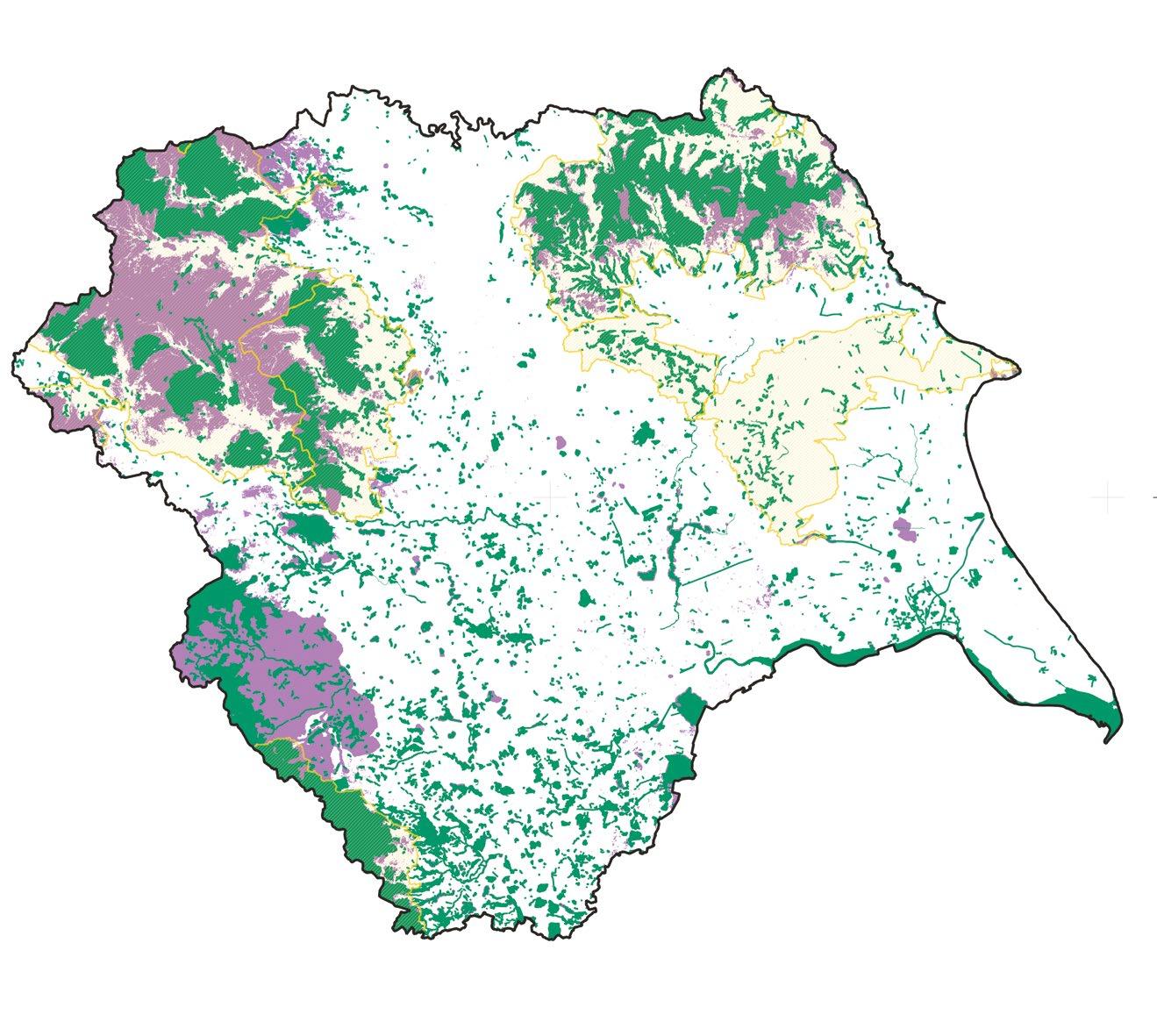

The Government’s Land Use Framework (currently under development) has estimated the percentage of England’s total agricultural land area that has potential to change in use or management by 2050 to meet Environment Act and Climate Targets. It estimates that 9% of agricultural land could be fully dedicated to delivering environmental and climate benefits (e.g. restoration and maintenance of peat-forming and peat dependent habitats; creation of woodland; creation/ restoration of coastal and lowland heathland habitats) without significantly reducing food production
The adoption of a similar ‘9% nature and climate friendly agricultural target’ for Yorkshire by converting low grade agricultural land, in addition to Opportunities 1 to 3 above, would make a significant contribution toward our 30% target, further consolidating the nature network.
To enable the full spectrum of land opportunities to effectively contribute to 30 by 30, government mechanisms are required to support landowners and managers to fulfil the requirements of the 30 by 30 criteria.

In the lowland agricultural peatlands of the Humberhead Levels (3,000 hectares) and Cayton and Flixton Carrs near Scarborough (1,200 hectares), there is an opportunity to bring the

Landscape Recovery Schemes (LRS) creating a wilder future
In the Yorkshire Dales, three neighbouring Landscape Recovery Schemes (LRS) are being developed which will deliver wildlife recovery over a combined around 20,000 hectares.
Two of these – Three Dales and Ure Dales – are being led by Yorkshire Wildlife Trust, and the third – Heart of the Dales – by the National Trust.
The Three Dales LRS aims to restore habitat for a suite of upland bird species – Curlew, Ring Ouzel and Black Grouse – and to help an expanding population of Red Squirrel. The project is one of the first round of 22 pilot LRS projects and, if approved by Defra, will be delivered over 30 years from 2026. It will promote change in the landscape to include more scrub and woodland habitat, peat bog restoration and wetland improvements which will underpin the recovery of the target species.
The project covers over 4,200 hectares of blanket bog and limestone habitats in the Whernside and Ingleborough area of the Yorkshire Dales National Park, and is a collaboration between four private farms, Ingleborough Estate, Natural
England, Yorkshire Wildlife Trust and the owner of a Sitka spruce plantation. Landscape Recovery Schemes like the Three Dales represent a huge opportunity for a new way of working, focused on ambitious environmental goals while at the same time aiming to strengthen rural communities and support local action to make space for nature.
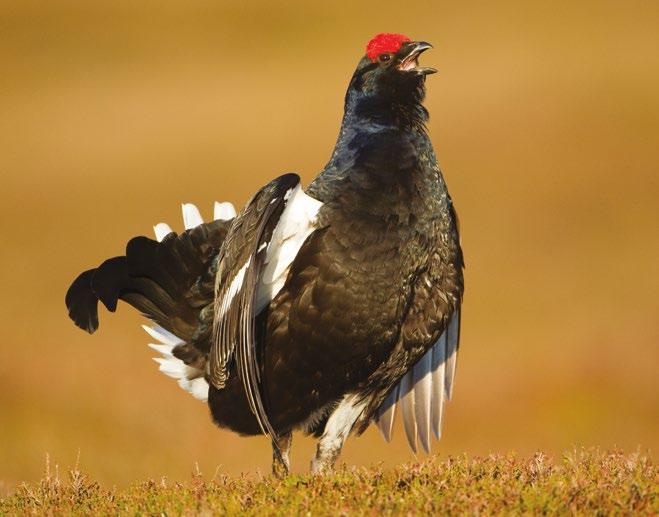
The developing LRS in the Yorkshire Dales have demonstrated an appetite for change from farmers and landowners in the area and irrespective of Defra funding confirm an ambition for nature’s recovery at scale and the need for both public and private funding to ensure these landscape scale partnerships move from development to delivery.
In order for the nature network to be effective, its constituent sites should be connected through corridors and stepping stones as well as integrated into wider land and seascapes. If wildlife can travel between areas along blue and green corridors through towns, cities, the countryside and the farmed environment, it will be more resilient to other pressures including climate change.
The opportunities are vast –landscape features such as roadside verges, railway embankments, canals and more natural features such as rivers, streams and the coastline simultaneously provide a mosaic of habitats and connections. Many already exist in the landscape, providing a foundation to build from
Almost 38,500 km of hedgerows across Yorkshire – providing vital corridors that significantly enhance biodiversity, connect habitats, support agriculture by offering shelter, and deliver a range of ecosystem services including clean water and carbon storage, making them crucial for large-scale landscape recovery and sustainability.
Hedgerow condition varies, with many in poor condition – 65% are less than 3m in height, and many are thin, fragmented and lack structural diversity, reducing their value for wildlife, provision of environmental services and landscape appeal. The opportunity is to plant more hedgerows and manage them better.
6,500 km of streams, rivers and canals – providing major opportunities to improve watercourse quality. This
includes linear reconnection – such as removal of barriers to improve instream habitat and connectivity – and lateral reconnection, reconnecting land and water by restoring floodplains.
Connecting the lowlands – the small, isolated nature of Yorkshire’s statutory and non-statutory protected sites in the lowlands means these areas would
hugely benefit from consolidation through corridors and stepping stones, not only to achieve conservation outcomes but to cope with stresses and disturbances, including the impacts of climate change.
Watercourses are vital for connecting land and seascapes, but their condition dictates the quality of these connections and the benefits they provide.

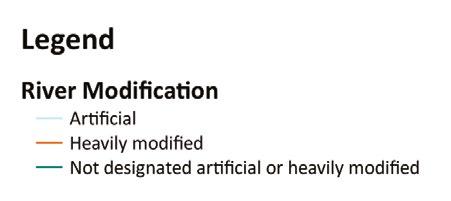


Nature alongside food production
In addition to the 9% described under Opportunity 4, the Land Use Framework (currently under development) has estimated that a total of 5% of agricultural land can provide environmental and climate benefits alongside food production. To achieve our ambition to betterconnect our important habitats, we can incorporate more trees and hedgerows, flower-rich margins, and riparian features such as river buffer strips, alongside food production. The adoption of a similar target for Yorkshire, incorporating the range of linear landscape features, would further add to the contribution toward our 30% target.
Supporting farmers and wildlife – the absence of long-term protection means mechanisms such as Environmental Land Management schemes (ELMs) are currently unlikely to achieve the formal 30 by 30 criteria. Given that more than 70% of Yorkshire is under agricultural management their contribution is still important and crucial to a thriving landscape.
High grade agricultural land (Grade 1 and 2) is concentrated in the lowlands, particularly in East Yorkshire and the central belt running north-south. Wildlife-friendly management of areas alongside focussed areas of food production (e.g. on less productive margins, corners and pockets) will help to create connections between isolated sites, across the matrix of multiple land uses.
Managing invasive non-native species (INNS) directly supports the goals of 30 by 30 – invasive species such as Giant Hogweed, Himalayan Balsam, American Mink and Signal Crayfish can lead to biodiversity decline, changes in ecosystem structure and function, and
economic impacts, working in direct opposition to 30 by 30 actions.
In Yorkshire, the majority of these invasive species are found along waterways, particularly our river and canal network – one of the key dispersal pathways for invasive species.
Invasive species management often requires collaborative efforts across different land ownerships and management units to be effective. This
necessitates a “joined-up” approach, where different stakeholders work together to control invasive species across larger landscapes.
Alongside habitat loss, predatory American Mink are one of the main causes of Water Vole decline. Water voles are ecosystem engineers that actively alters its environment through burrowing and foraging – creating new habitats and increasing resources for other species.

The North York Moors National Park GrubsUp! project aims to restore and connect vital habitats for invertebrates across nearly 200 square miles of ‘B-Lines’. B-Lines, also known as ‘insect superhighways’, link existing wildlife areas together, creating a network that weaves across the landscape for the

benefit of both day and night time pollinators. Focused on enhancing biodiversity and climate resilience, the project is looking to collaborate with farmers, landowners, and local communities to protect and restore habitats for invertebrates by improving road verges, reducing artificial light, planting species-rich hedgerows, and restoring grasslands, ponds, and wetlands.

Supporting more, bigger, better and joined
We are losing the species that make Yorkshire special.
Nearly 2,000 species are estimated to have disappeared from Yorkshire over the last 200 years and a further 3,000 are threatened, some with critically small and/or restricted populations.
The landscape-scale opportunities already described will benefit many species that are currently declining or threatened, and according to present evidence will also allow others to colonise or re-colonise the county.
Species interventions do not directly contribute to Yorkshire’s 30% target, but some are critical for the health of an ecosystem. In other cases they will help people to build important relationships with nature.
Bringing species back – that are extinct from Yorkshire or with critically small and/or restricted populations, such as Pasque Flower, will halt and reverse national declines.
Supporting ecosystem engineers
– species that have declined or have been lost, such as Beavers and Sphagnum mosses, will restore the natural diversity, ecological processes and important functions of ecosystems.
Helping the specialists – some species with specialist or complex requirements such as Black Grouse and Water Vole will require specific measures to help them survive and thrive.
Iconic species connecting people and nature – species such as Lady’s Slipper Orchid and Red Squirrel will bring people and nature closer together.
Catalysing large scale conservation programmes – ambitious habitat restoration across large areas which reconnect habitats will help rare species such as Pine Marten to recolonise areas, while bringing benefits for many other species.
Sphagnum mosses are the keystone species of our upland blanket bogs and raised bogs, forming the carbon rich peat. The conditions these little mosses create makes these places full of unique biodiversity, sources of our drinking water, and can even slow flood waters.
At least 30 species of Sphagnum are known in Yorkshire. All have significantly declined due to historic draining of our peatlands and many are now rare or extinct, so replanting
Orchid’s
The Lady’s-Slipper Orchid, once thought extinct in the UK, is starting to recover in Yorkshire thanks to a pioneering conservation project supported by Yorkshire Wildlife Trust and partners.

Yorkshire is a stronghold for around 3,000 species making us important custodians
Sphagnum is a huge part of our peatland restoration work.
Once the drainage is blocked and the flow slowed, the moss can survive again.
Because it spreads slowly, Yorkshire Wildlife Trust works with landowners and contractors to plant hundreds of thousands of moss ‘plugs’ every year across our landscape scale projects. We engage local communities and businesses in learning, growing and planting Sphagnum so that our peatlands can be wild and loved once again.
One of our most spectacular native wildflowers, Lady’s-Slipper Orchids were prized by Victorian orchid collectors and, combined with habitat loss, declined to the brink of extinction in Britain by the end of the 19th century. With support from Natural England’s Species Recovery Programme, the team has successfully restored habitats, propagated orchids at Kew Gardens, and reintroduced them to the wild.
Last summer, the team celebrated the first new orchid to have grown from seed naturally produced by the introduced plants — proof that this long-term project is working.
This inspiring collaboration continues to grow, aiming to establish thriving populations across the orchid’s former range, including in suitable limestone habitats of the Yorkshire Dales.
Bringing Beavers back to our river systems offers proven benefits for biodiversity, flood management and water quality, as shown by the successful Cropton Beaver trial in North Yorkshire.
Building on this, Forestry England and the North York Moors National Park Authority are collaborating with Yorkshire Wildlife Trust to investigate the feasibility for Yorkshire’s first wild Beaver releases, and to carry out public consultations. The partnership
are working closely with other Wildlife Trusts and partners in the Humber Basin to seek licences for wild releases of Beavers into this huge catchment, which will bring multiple benefits across a large part of northern England.
Once part of our native wetland wildlife, Beavers play a role as ecosystem engineers, creating complex wetland habitat along river valleys, holding water up bringing benefits in times of drought and slowing the flow in times of flood.
The wetland habitat in turn provides a range of habitats for a wealth of wildlife.


Thinking big for Yorkshire Kent Wildlife Trust’s The Wilder Blean project is a rewilding initiative focused on using free roaming European Bison – the closest living relative to the now extinct Steppe Bison once native to the UK – as ecosystem engineers, their natural behaviours like grazing, browsing, trampling, and dust bathing create diverse habitats and promote regeneration. The project involves consultation with local landowners and residents, addressing any concerns and ensuring community involvement.
A couple of years into the project and positive impacts of the Bison on the woodland is already being seen, with increased biodiversity and the return of species previously thought extinct. This award-winning project shows the incredible power of nature to heal and gives us hope for the future.
Learning from and integrating examples of other successful project initiatives will help to accelerate nature restoration in Yorkshire.

Monitoring our progress
We also need to monitor the species that are the intended beneficiaries of all our other activities. It will not be sufficient to demonstrate that we have created a greater area of woodland or wetland or habitats in general – to understand whether our habitat-based interventions have been successful, we must discover whether (and what) species are colonising them.
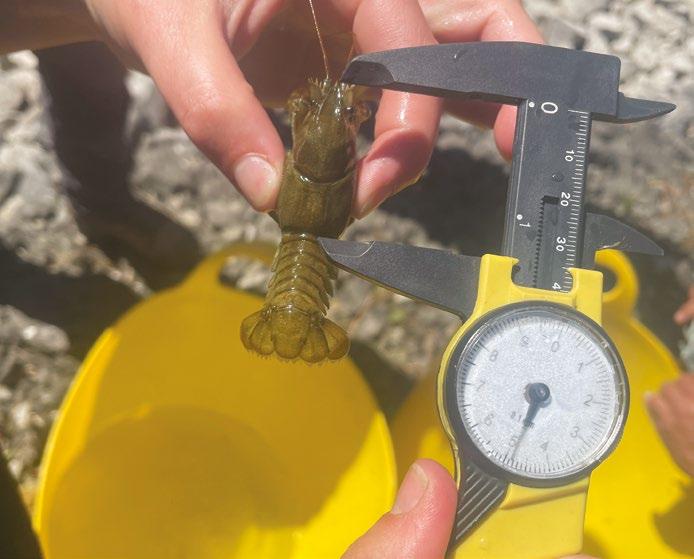
Yorkshire Species of Conservation Concern
Over 300 species of birds, plants and moths in Yorkshire are ‘Yorkshire Species of Conservation Concern’ – species which are nationally threatened, rare and declining in Yorkshire, and extensively found in Yorkshire.
By focusing on Yorkshire Species of Concern we can enhance activity for species of highest conservation concern, as well as monitor landscape-scale changes, and evaluate the effectiveness of our conservation efforts.
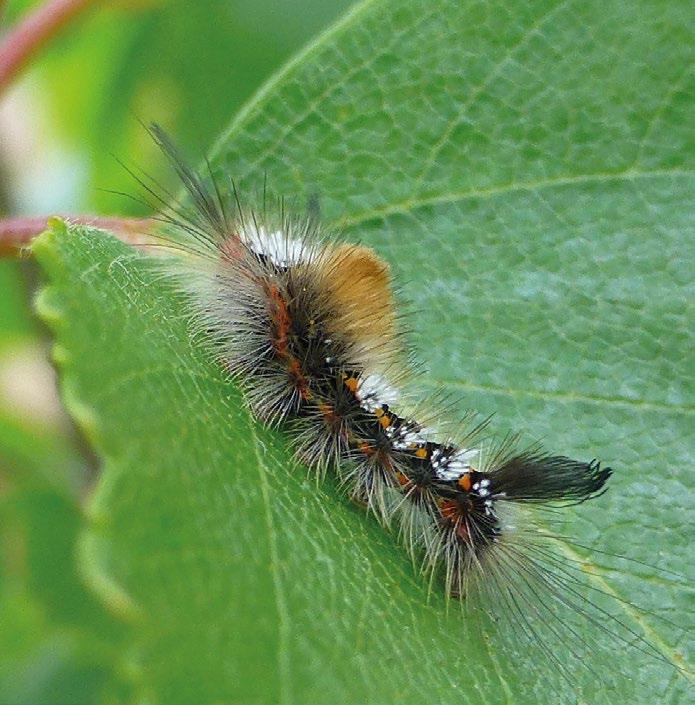
Many people across Yorkshire already care passionately about our wildlife and wild places.
The collective actions of Yorkshire’s communities and organisations for nature will better position us to protect, manage and restore a significant proportion of our terrestrial, freshwater and marine habitats to enhance our nature network and support abundant wildlife. These actions will also support the delivery of climate change adaptation and mitigation benefits for people, such as flood alleviation, and the nature tourism and recreational opportunities which stem from bolstering Yorkshire’s natural beauty.
Nature positive lifestyles – our physical and mental health is enhanced by access to green space. Only one in three people in Yorkshire live within a 15 min walk of a park, woodland, river, or other natural space. More green space will allow everyone to experience, connect, and directly benefit from nature.
Valuing nature – 70% of people are aware of the threat to and our ongoing loss of biodiversity, and are already taking action to support and protect biodiversity in England. 11% are considered highly engaged, while 59% have some engagement.
Society’s interest in and commitment to biodiversity is increasing – in 2022, the amount of time volunteers contributed to conservation activities in the UK was 56% higher than it was in 2000.
Increasing our engagement with nature and focusing action across neighbourhoods will expand and connect natural habitats, supporting a wide variety of species.
Large opportunities to increase urban biodiversity – About 88% of households in the UK have gardens, equating to over 25 million gardens. England’s garden area is more than four and half times larger than all of our National Nature Reserves combined.
United for nature
There are around eight million members collectively across the largest UK nature charities – providing a big voice for nature. Irrespective of voting choice, nature matters to voters across the electorate – almost identical numbers of environmental charity supporters vote Conservative as Labour. Providing huge opportunity to put nature at the heart of political decision making.

Local communities achieving 30%
In just one year, the West Hull Community Hub at West Hull Amateur Rugby League Football Club has transformed their site to ensure that 30% is functioning well for nature by 2030. The hub is now building on this by improving the quality and variety of delivery for nature. With the current plan in place, the 30 by 30 concept is secured and the landscape of the sports ground has changed for all to see.

Local communities building green connections
Each house on our street has a back garden, each back garden joins up with the green space behind, the green space runs adjacent to the allotments, and the allotments joins up with the car park – this is the Kippax Wildlife Corridor.
The Kippax Wildlife Corridor was established by a group of residents in Kippax near Leeds, who are really making a difference for nature on their doorstep.
In partnership, National Trust and Yorkshire Water are restoring upland landscapes across the South Pennines and empowering local communities to be part of this action. Over the next two years, 300,000 trees will be planted across 350 hectares of land, thanks to support from White Rose Forest. With funding from West Yorkshire Combined Authority, we’re transforming upland streams and rivers by installing 3,500 ‘leaky dams’: structures that will slow
Farmers collaborating for limestone recovery
The Limestone Ridge Nature Recovery Farmer Group in South Yorkshire are looking to set aside 10% of highly productive agricultural land for nature with a view to recovering farmland birds. The group, led by Michael Woolhouse, Red House farm, Doncaster, have used a combination of SFI funding and contributions

Providing a voice for nature
Showing the strength of public opinion for stronger political action to tackle the nature and climate crisis, over 60,000 people came together in June 2024 from across the country –including Yorkshire – to demand faster action to ‘Restore Nature Now.’

They came together to turn a strip of land along the back of their houses into a ‘green corridor’ and have created a wildlife garden in their allotment car park with a pond, native hedge, trees, shrubs, wildflowers, and lots more. Their patch is now a haven for hedgehogs, frogs, birds, butterflies, and bees,and the group have noticed numbers increasing dramatically since they started. Local Authorities can lead the way
water flow from the moorland and help downstream areas cope better with flooding. With more trees and more water on the moors, we are creating more space for wildlife, and local communities are helping us make this happen: nearly 1,000 people so far have joined in tree planting, habitat monitoring and sessions in schools.

from buyers to fund several habitat improvement interventions including creation of buffer strips, beetle banks and hedgerow planting.
Farmer groups contributing to a shared vision of restoring the landscape for farmland birds with multiple co-benefits for wildlife and the wider environment.

The Woodland Trust is urging local authorities to declare a nature emergency and demonstrate commitment to meaningful action through priority actions, including protecting and managing 30% of council landholdings for nature recovery by 2030.
Some councils in Yorkshire have declared a nature emergency, but none have committed to 30% positivelymanaged land on council landholdings. By recognising the threat of the nature emergency and committing to action, local authorities – as landowners, policy makers and local champions – can play an important role in driving nature recovery locally and contributing to the 30 by 30 target.
Local Authorities own over 50,000 hectares of Yorkshire’s land – that’s about 3.5% of the county. Beyond town halls, council offices, schools, and council housing, this can also include parks, allotments, roads and verges, greenbelt, and farming land – providing opportunities for nature-friendly management.
Yorkshire’s marine and coastal ecosystems are unique and hugely important. Whilst the same ecological principles embodied in ‘more, bigger, better and joined’ apply on land and at sea, the mechanisms to deliver 30 by 30 differ because the sea is such a distinct environment, with no permanent human occupation and few barriers.
Marine Protected Areas (MPAs)— including Marine Conservation Zones (MCZs), Special Areas of Conservation (SACs), and Special Protection Areas (SPAs)—currently cover 34.5% of Yorkshire’s inshore marine waters (within 12 nautical miles of the coastline). This represents a strong foundation for the conservation of important species and habitats.
However, coverage does not equal condition. Of Yorkshire’s eight designated MPAs: Only three sites (around 12% of sea area) are in a recovered or recovering condition.
One site is assessed as degraded or degrading.
Four sites are in unknown condition due to gaps in monitoring or reporting.
To meet the 30 by 30 target—protecting 30% of land and sea in a well-managed and ecologically representative way by 2030—all eight MPAs must be brought into favourable condition through effective assessment and management.
Beyond biodiversity: MPAs for climate and communities MPAs do more than conserve wildlife. When well-managed, they:
Enhance fish stocks in the nonprotected areas surrounding them, by providing safe havens for fish to breed. Enhance carbon sequestration by
protecting blue carbon habitats like seagrass and saltmarsh.
Buffer coastlines from erosion and storm surges.
Support climate adaptation by building ecological resilience and providing nursery grounds for fish.
Realising these benefits requires a shift from “paper parks” to effective protection adopting a “more, bigger, better and joined”
The kelp beds running northwards between Flamborough and Staithes are part of a vast North Sea network that soaks up a staggering 1,300 tonnes of organic carbon every year through photosynthesis

The missing piece: Highly Protected Marine Areas Currently, there are no Highly Protected Marine Areas (HPMAs) in Yorkshire’s seas. HPMAs go further than traditional MPAs by prohibiting all extractive, depositional, and damaging activities—allowing ecosystems to recover fully and function naturally Establishing at least one HPMA in the region would contribute to national North Sea targets and act as a vital stronghold for biodiversity and climate resilience.
Pathways to recovery: restoration and better protection Seascape restoration—including efforts to recover saltmarsh, seagrass, and sand dune habitats—is essential to improve ecosystem health and resilience.

Increasing the level of protection within existing MPAs, for example by excluding bottom trawling and other high-impact activities, would yield substantial ecological gains.
Whether through designation of new HPMAs, active restoration, or improving protection and management of existing sites, there is a clear path toward a healthier, more resilient marine environment for Yorkshire—and for future generations.
Restoring nature in the Humber Estuary, a heavily modified seascape, presents significant challenges. Historical habitat loss, pollution, and coastal squeeze have severely reduced the extent and condition of intertidal and subtidal habitats.

Grey Seal colony at Flamborough Head has grown rapidly since 2021, with peak counts reaching over 800 individuals across the site, with many now breeding here too. This represents a significant shift in habitat use along the Yorkshire coast, and highlights the importance of Flamborough as a haul-out and foraging area. The site lies within a network of designated marine areas, but seals currently receive no legal protection from disturbance. Yorkshire Wildlife Trust established dedicated surveys in 2023 to gather baseline data,
revealing pressures such as human disturbance and marine debris. The presence of tagged seals from Germany and the southeast of England shows how individual seals are using interconnected habitats across the North Sea. Coastal sites with landsea connectivity will be increasingly important as populations expand.
Protecting and managing sites like Flamborough is vital for the longterm recovery of Grey Seals.

The UK holds over a third of the grey seal’s global population
Through the Wilder Humber Partnership of Yorkshire Wildlife Trust, Lincolnshire Wildlife Trust and Ørsted, over 16 hectares of intertidal seagrass have been replanted since 2020, and pioneering work on native oyster reefs, saltmarsh, and seagrass is well underway.
This success reflects a growing commitment to collaboration between conservation bodies, regulators, and industry. The work supports threatened species including Sea Bass, Sandeels and Native Oysters, while also enhancing climate resilience through carbon storage and coastal protection. Challenges remain—from securing longterm funding to navigating regulatory complexity—but the Humber is now widely seen as a national demonstrator for estuarine and coastal recovery.
Even the most altered seascapes can be brought back to life with ambition, partnership, and persistence.

The wider landscape occupies the remaining 70% of Yorkshire, and it has a major role to play – holding the nature network within, it will protect and buffer our important sites. Our land and seascapes are interconnected therefore, the condition of the other 70% can significantly impact biodiversity, ecosystem health and our livelihoods.
Across that 70%, areas of land management will not always be for wildlife – it may be for food, transport, housing, industry or recreation. If we can seize opportunities where available – adopting regenerative farming or providing for wildlife in the margins and corners of this land – it will also contribute to a healthy environment and our well-being.
To thrive, we must think of Yorkshire as an interconnected whole. How we manage different land uses across cities and villages, agriculture, fisheries, and other areas where human activities take place – even if they are not formally included in the 30% – will ultimately impact our overall success.

When the UK Government first committed to the 30 by 30 target in 2020, some were daunted by the challenges ahead. Five years later we are making slow but sure progress with protected sites and existing projects already covering 13% of the county’s land and water and 12% of sea, and significant opportunities for further progression towards – and to even surpass – the 30% target.
We must now super-charge our efforts – strengthening our protected area network, supporting it with long-term, large-scale nature recovery programmes, connecting the nature network, restoring threatened species and ecological processes, and delivering nature’s recovery through a powerful coalition of diverse organisations and Yorkshire community.
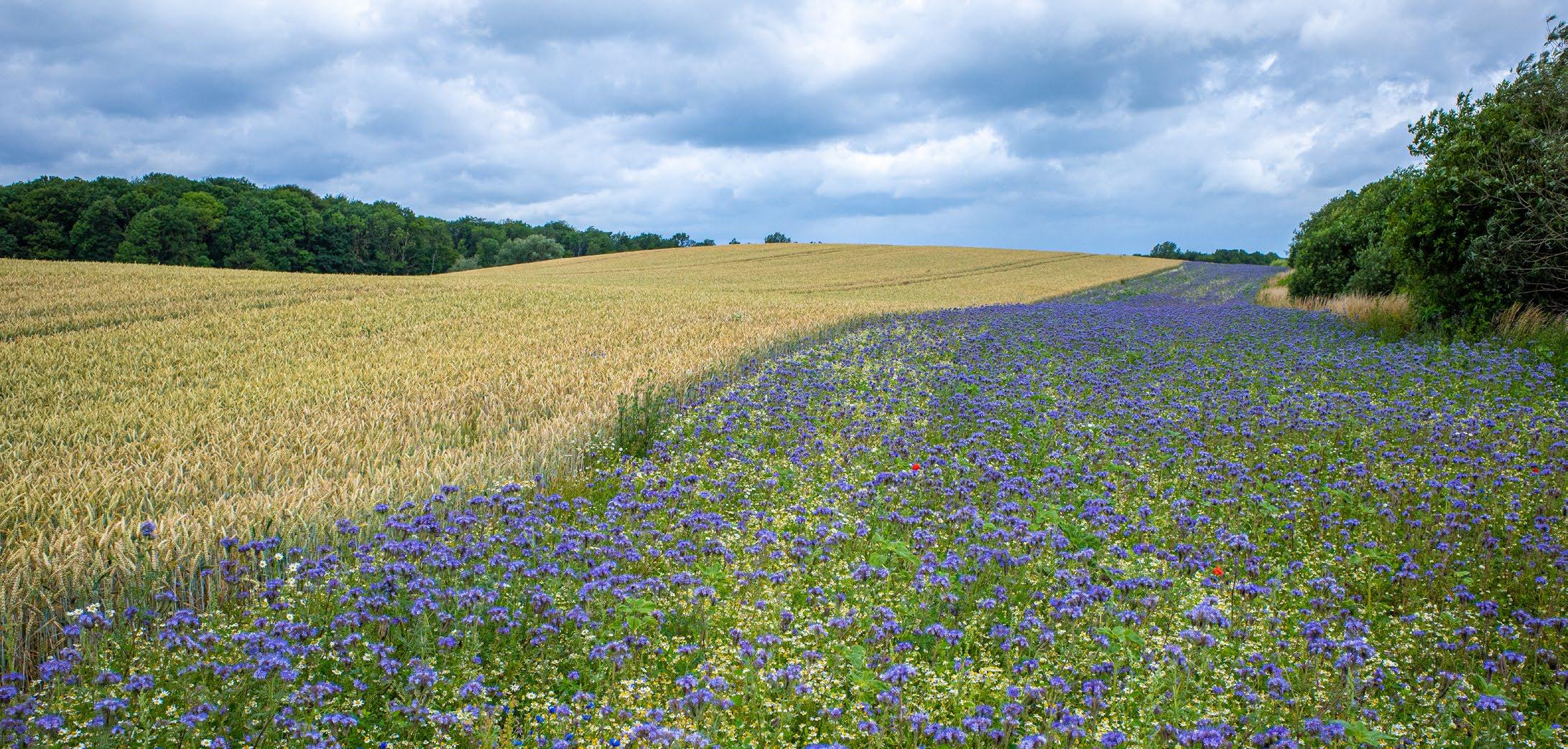
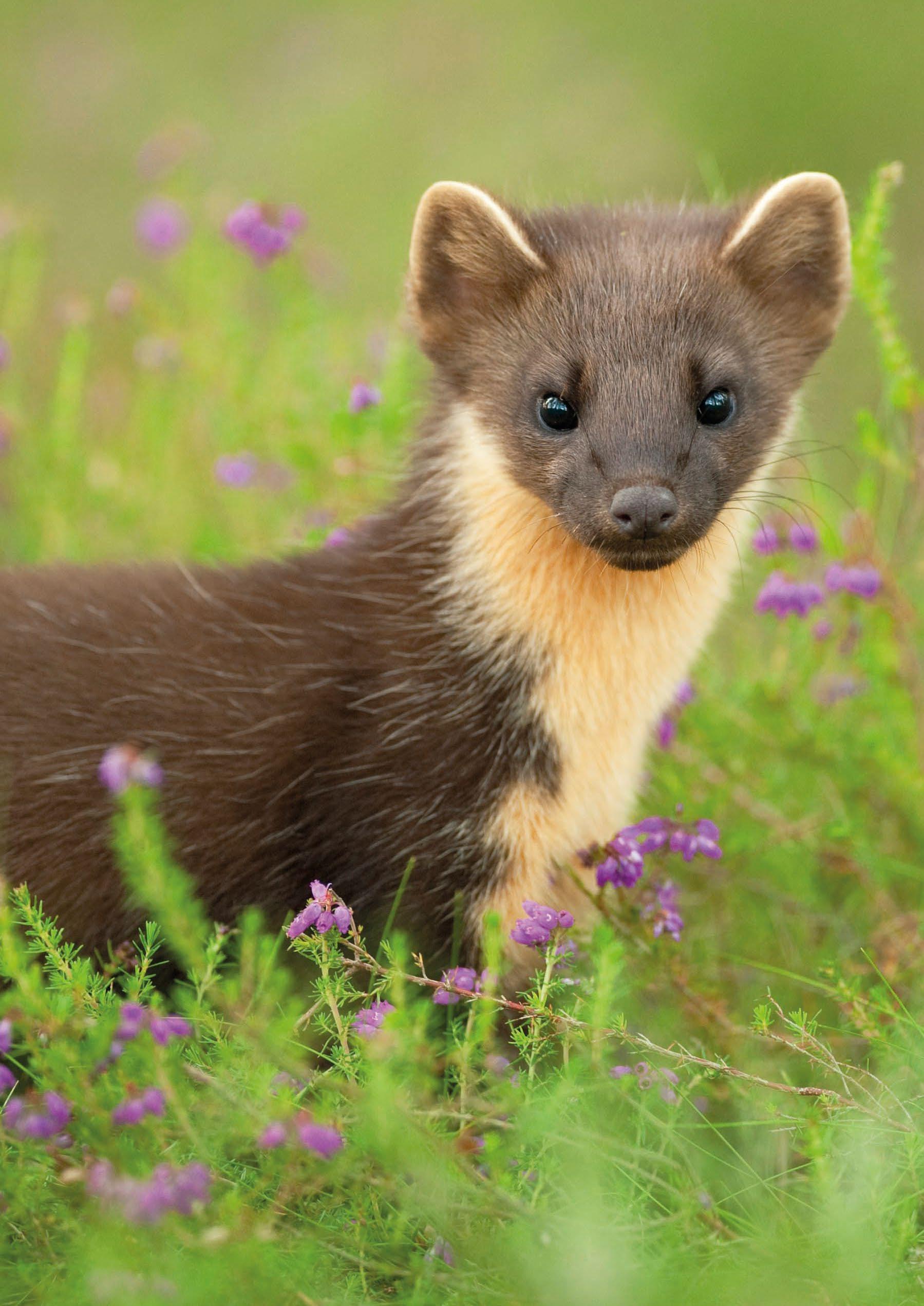
As the pressures on both our depleted wildlife and our own quality of life – increasing droughts, floods, food insecurity, and polluted waters – continue to increase, the need for strong, collective action is imperative.
We have used 30 by 30 targets to motivate, mobilise and accelerate the collective action required to restore Yorkshire’s land and seascapes to support a thriving future.
30% is just the foundation –to ensure a holistic system supporting a representation of species, habitats and ecological functions, we must go beyond this minimum target. Scientists have recommended longer-term ambition towards 50%.
Developing the project pipeline –we acknowledge that not all the nature-friendly activities described in this Blueprint will contribute toward the ‘formal’ 30 by 30 target. The opportunities identified will, however, enable us to develop a pipeline of projects and activities required to drive forward the action needed to deliver Yorkshire’s 30%, while providing the opportunity to address any insufficiencies and work towards formal 30 by 30 inclusion.
We recognise and celebrate all contributions as vital toward creating a resilient and prosperous Yorkshire.
By integrating the seven opportunities into a multifunctional landscape – aligning conservation efforts with other societal goals and supporting and complementing other land management practices – we can create a wild and thriving Yorkshire for all.
Nearly three-quarters of Yorkshire is under agricultural management, highlighting the need for a multifunctional landscape.
East Yorkshire (81% farmed) and North Yorkshire (79% farmed) are the most agricultural areas, with other areas about 50% farmed.
Food production and nature restoration can co-exist and benefit one another. By connecting habitat parcels using buffers, hedgerows, riparian strips; minimising soil disturbance; and creating new habitats on marginal land, farmers can benefit wildlife and the environment whilst maintaining thriving livelihoods.
Farming less intensively, by reducing or eliminating expensive inputs of fertilisers, pesticides and veterinary medicines, can reduce costs while increasing their profits, as well as having major benefits for soil health and farm wildlife.
Government commitment is required – Environmental Land Management schemes (ELMs), environmental markets, and other green initiatives can support these efforts.
Bolstering the nature network – with effective management for nature and sufficient funding, long-term ELMs contracts could contribute to achieving nature’s recovery both in protected areas and beyond. These other areas may not meet the ‘formal’ conditions to contribute to 30% but will still play an important role in nature’s recovery.
The Upper Aire Project, led by Yorkshire Wildlife Trust, is a longstanding and large-scale land management and habitat restoration project located partly in the Yorkshire Dales, covering more than 35,000 hectares and funded by the Environment Agency.
The project has worked alongside farmers and other partners such as the Wild Trout Trust and Aire Rivers Trust for over 15 years, to identify areas of the catchment that would benefit from a range of work such as the installation of ‘leaky dams’, tree planting, reconnecting floodplains and pond creation. All intended to improve water dependent habitat for wildlife, with additional significant benefits for slowing water flow to reduce downstream flood risk
Leaky dam
and retaining water in the landscape.
The work with farmers in the catchment is playing a vital role in the innovative and exciting ‘Aire Resilience Company’ that will form a part of our continuing partnership work across parts of the Upper Aire, supported by local businesses in the Leeds area resulting in areas of new broadleaved woodland, hedgerows, species rich meadows, and ponds along with improved soil health throughout.
Projects to protect and restore wildlife can have significant benefits for natural flood management, protecting people and properties from flooding.
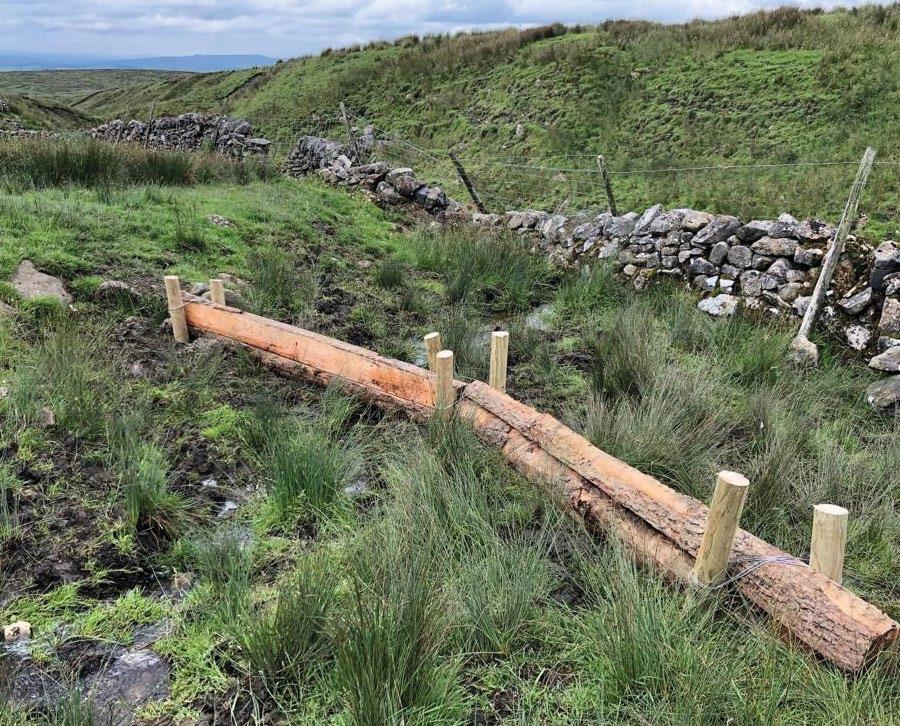
Over the last 20 years, an upland farm has been transitioning away from a production mindset, toward a farming business model which delivers both economically and for the environment.
The farm has seen a return to hardy native cattle and reduced sheep numbers, committing to 100% grass-fed, organic livestock farming with no artificial inputs. This naturefriendly approach has restored wildflower meadows, boosted insect and bird populations – including six red-listed species – and improved rare habitats.
Economically, we now produce 40% more meat and wool using fewer inputs, cutting costs and increasing profit. – Neil Heseltine (North Yorkshire farmer)
The farm’s reliance on government schemes has decreased, and time spent on livestock care has halved, improving work-life balance. Expert advice and collaboration with other farmers has strengthened ecological knowledge and confidence.
Today, the farm is more resilient, biodiverse, and financially secure – proof that working with nature benefits the environment, wildlife, farmers, and rural businesses alike.
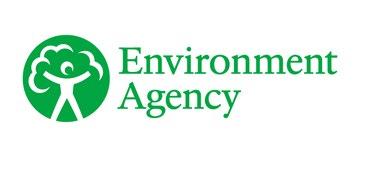
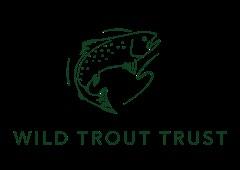


11,000 farms across Yorkshire forming a strong farming culture –balancing management for wildlife with food production and income
Towns and cities have enormous wildlife potential
Urban and suburban areas cover around 10% of Yorkshire – they can hold surprisingly large wildlife populations, which can play a crucial role in enhancing quality of life of the communities who live and work there.
An ecosystem approach to the marine environment
The marine environment has an extraordinary capacity for recovery when damaging pressures are reduced. While active restoration, such as replanting Seagrass or reintroducing Oysters, can help kickstart natural processes, much of the recovery is driven by the inherent resilience and connectivity of marine ecosystems.
pollution from land-based sources, phasing out harmful practices like bottom trawling, and ensuring that any new infrastructure is planned strategically, aligned with restoration goals and placed in areas where it causes the least harm.
continue to provide for us, but only if we make space for nature and manage our activities within ecological limits.
Green Corridors York is an example of how the charity St Nicks, alongside the community, is striving for “more, bigger, better and joined” green spaces across York. Connecting fragments of green space in the urban landscape, they are creating a green corridor linking and restoring habitats for species like Water Vole and Tansy Beetle. Their work also provides benefits for humans, increasing airflow through urban areas, reducing the urban heat island effect, and improving access to nature.

Building a biodiverse community in York, together.

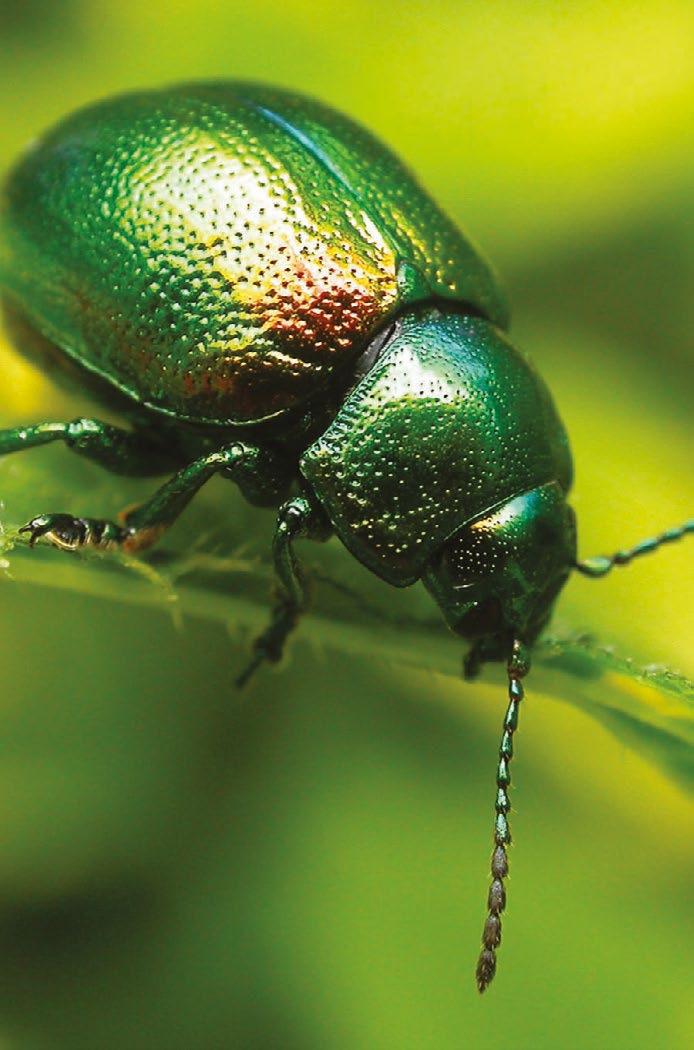
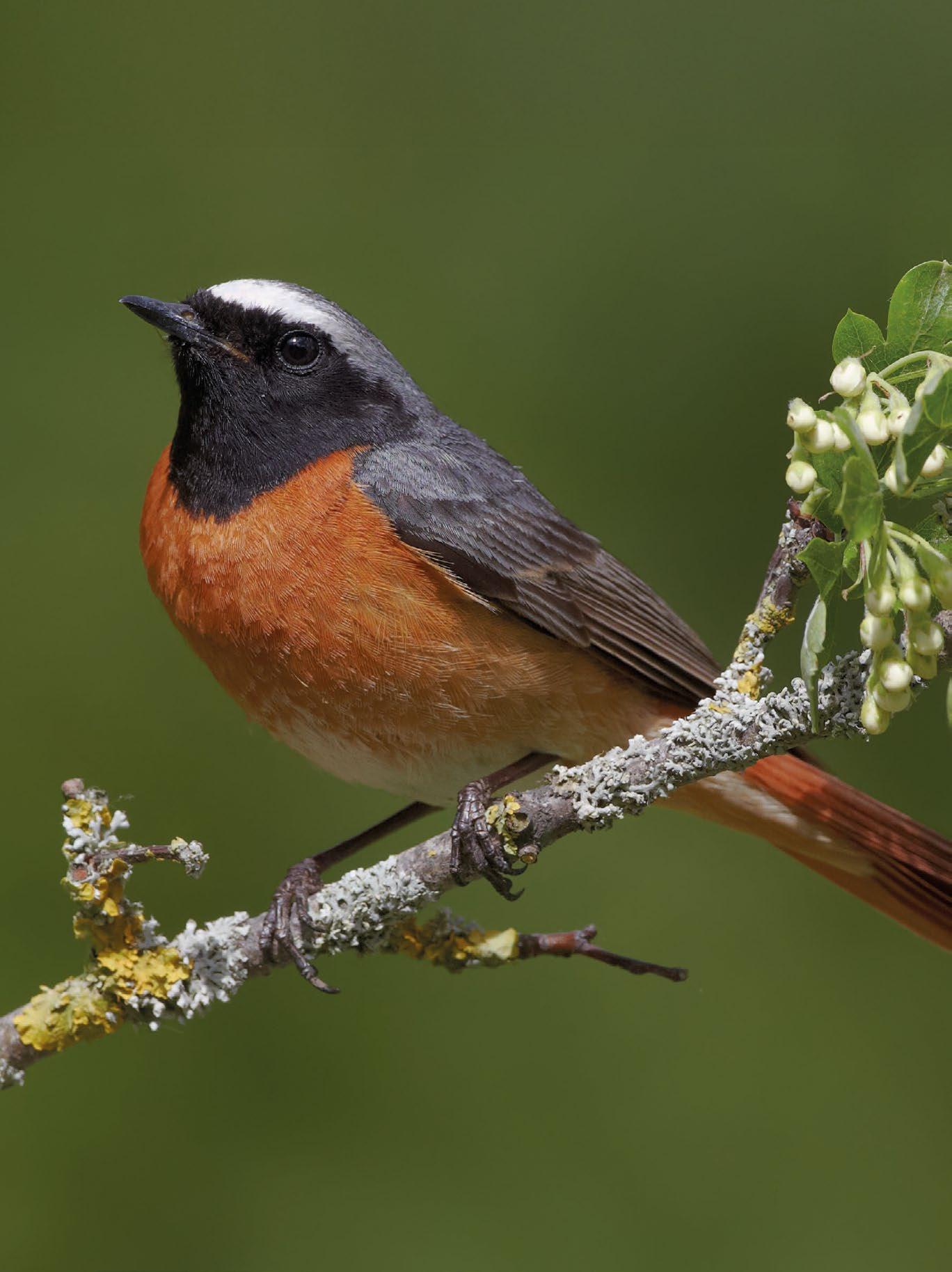
Woodland strategies delivering for Yorkshire
The government has set a target to “Increase tree canopy and woodland cover nationally from 14.5% to 16.5% of total land area in England by 2050”.
Woodland currently only covers around 8% of Yorkshire – creating significant opportunity for improvement and contributing to both Yorkshire and the national targets.
The White Rose Forest is the Community Forest for North and West Yorkshire (covering 10,300 Sq km). The
White Rose Forest Partnership (WRFP) has set ambitious targets stretching beyond the government targets to increase tree and woodland cover in its Forest Area to 18.5% by 2050. If successful this would increase the area of trees and woodland by about 67,000 hectares, around 134 million trees. Improving ecological condition and resilience and safeguarding the future of ancient and long-established woodland and ancient and veteran trees will also be important. Therefore, the partnership aims to bring 7,250 hectares of additional woodland into sustainable management.
Adopting an ecosystem-based approach means recognising that the sea is not a collection of isolated habitats, but a dynamic, interlinked system. To support its recovery, we must act at scale. This includes reducing
By shifting from a site-based focus to a broader, seascape-scale perspective, we can restore the health and function of marine systems as a whole. This approach supports biodiversity, bolsters climate resilience, and sustains the many benefits people derive from the sea – from fisheries and carbon storage to cultural and recreational value.
A healthy marine environment can
Managing road assets for wildlife
Road verges are surprisingly biodiverse, harbouring over 700 wildflower species – nearly 45% of the UK’s total flora. This includes 29 out of Britain’s 57 wild orchid species.
Across Yorkshire and Humber, it is estimated that there is 183 km2 of road verges – about 1% of land. In urban areas road verges cover around 3% of land, significantly contributing to urban green space and proving opportunities for habitat creation and connection.
Nature-friendly road verge management conserves valuable habitats for plants and animals and

contributes to overall ecological health. In urban areas, it can help to brighten busy roads as well as save on council management costs.
Across Yorkshire, road verges are being transformed from areas of open grass with occasional patches of scrub into species rich grasslands full of wildflowers.
Focusing local action
Local Nature Recovery Strategies (LNRS) developed by local authorities have a significant role to play in delivering the commitment to positively manage 30% of land for nature by 2030 – providing a significant opportunity for
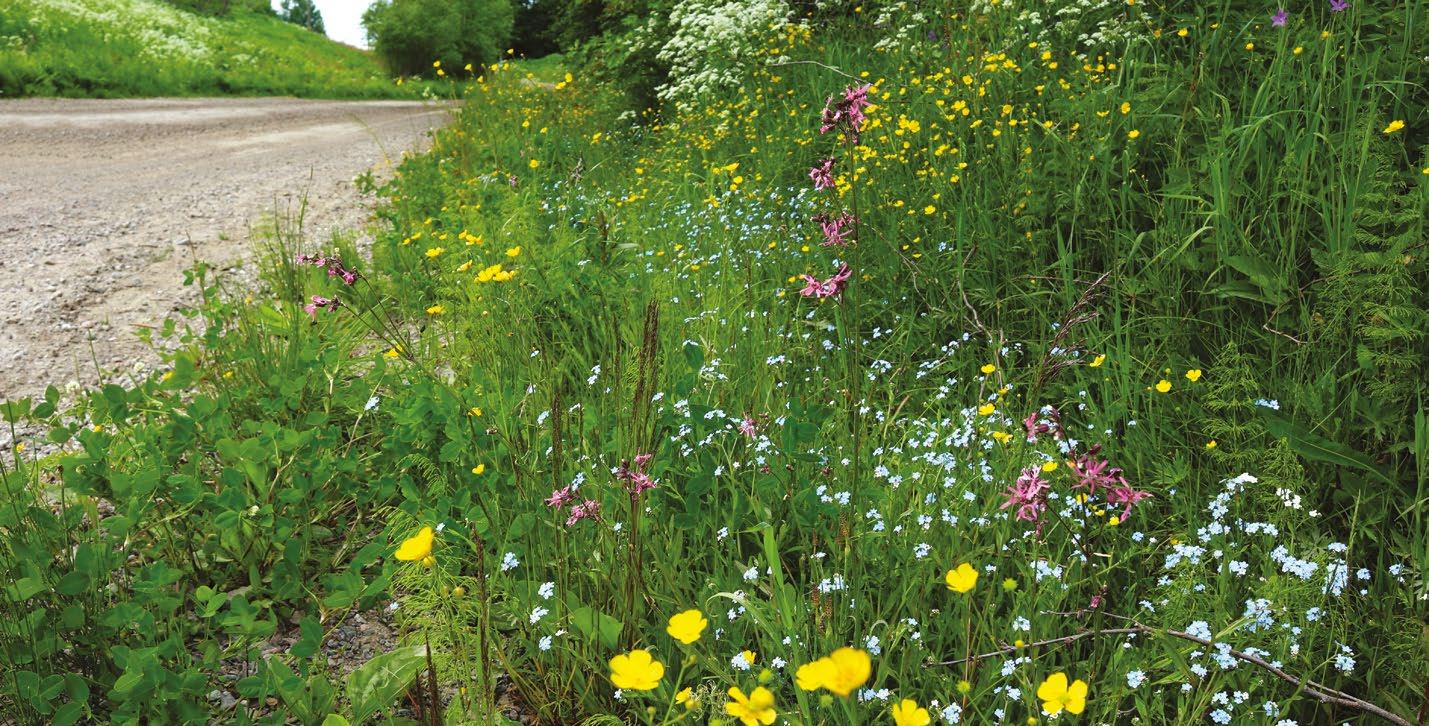
nature-positive engagement and action at local and regional scales.
Using the knowledge and expertise of local people and communities, LNRS are mapping key sites and local priorities for connecting, enhancing and restoring nature in their strategy areas, and directing focussed and impactful action. Together with local data and knowledge, the development of the strategies for Yorkshire have also drawn upon the evidence outlined in the State of Yorkshire’s Nature report.
Local Nature Recovery Strategies will help identify and map the best locations for nature recovery, contributing to a nature network across Yorkshire and nationally thereby supporting the 30 by 30 goal. They should also help integrate existing plans and strategies, coordinate action across different sectors, and secure new funding for nature recovery.
LNRS are a key tool for directing nature recovery actions and therefore must ensure that there are ambitious plans to restore nature everywhere, underpinned by effective regulation.
This Blueprint gives us a clear route to achieving 30 by 30 in Yorkshire. This goal needs urgent action by a broad coalition of individuals, communities and organisations.
Our intent is to provide an accessible, measurable framework for action, based on the best available science and practical experience of nature’s recovery.
Yorkshire Wildlife Trust will focus our nature reserves, activities and influence on achieving 30 by 30 and driving nature’s recovery. However, our actions can only be a small proportion of what is needed.
We seek to connect a powerful coalition of organisations, community leaders,
businesses, committed wildlife gardeners, progressive farmers and landowners across Yorkshire, who together will scale up and accelerate nature’s recovery.
We will share our ideas and learning and network with others, staying open to innovations and new evidence. If you are committed to playing a part in creating a wilder future for Yorkshire where people and wildlife thrive together, please consider joining and sharing your actions.
This is the moment where we must turn our collective insight, experience and commitment into transformative action to secure the future for wildlife and our wellbeing.
We have five critical years for Team Yorkshire to prove that 30 by 30 is more than a target. We have the knowledge, skills and willingness to make it happen, for the benefit of people and wildlife across this amazing county.
We are grateful for the advice and support provided by Professor Alastair Fitter, Sir John Lawton and Dr Jane Smart, and the Trust’s Nature Recovery Committee in developing this work.
We are also grateful to all our partners who have generously shared their case studies demonstrating the important work already underway, from which we can learn and build upon on our journey to 30 by 30.


This work provides a baseline for a Yorkshire 30 by 30 ambition. It is part of an iterative process, developing in parallel with the emerging national 30 by 30 criteria
If you have any feedback, find any errors, or would like to contribute data to future editions and to the work to bring Yorkshire’s nature back, we would like to hear from you. Please get in touch by contacting ywt.data@ywt.org.uk